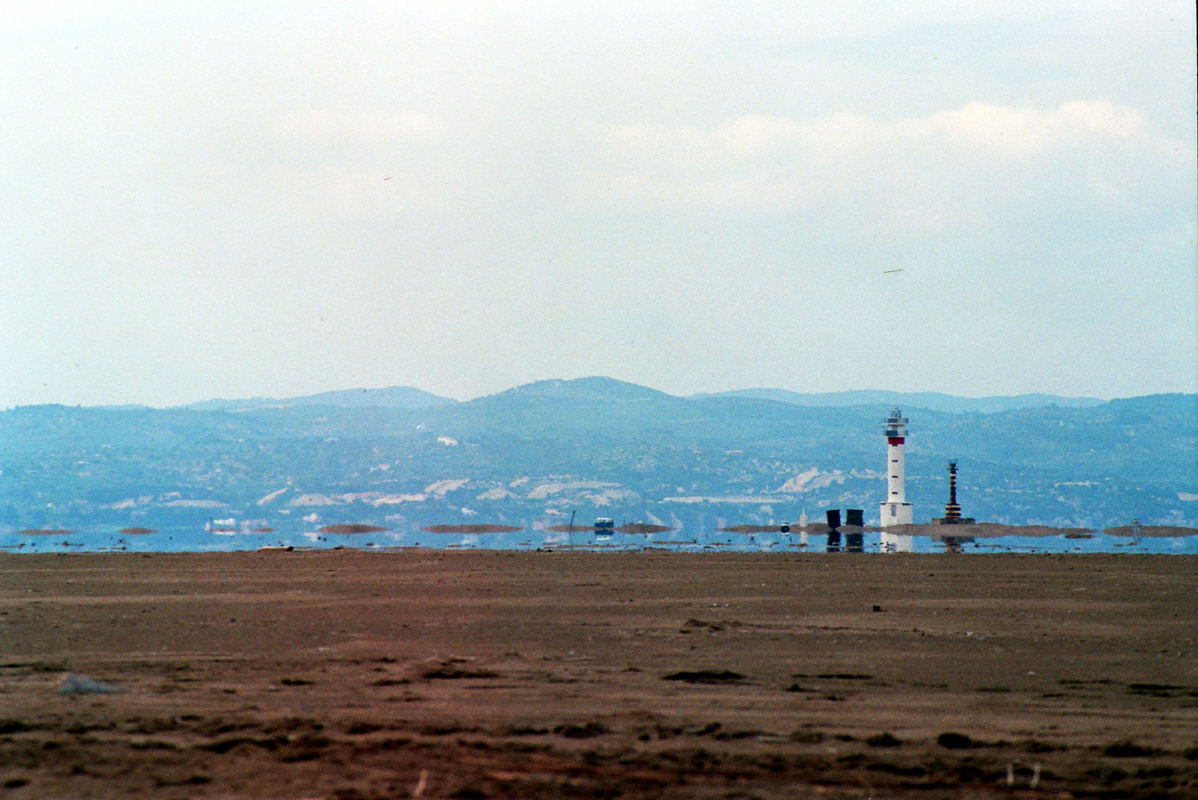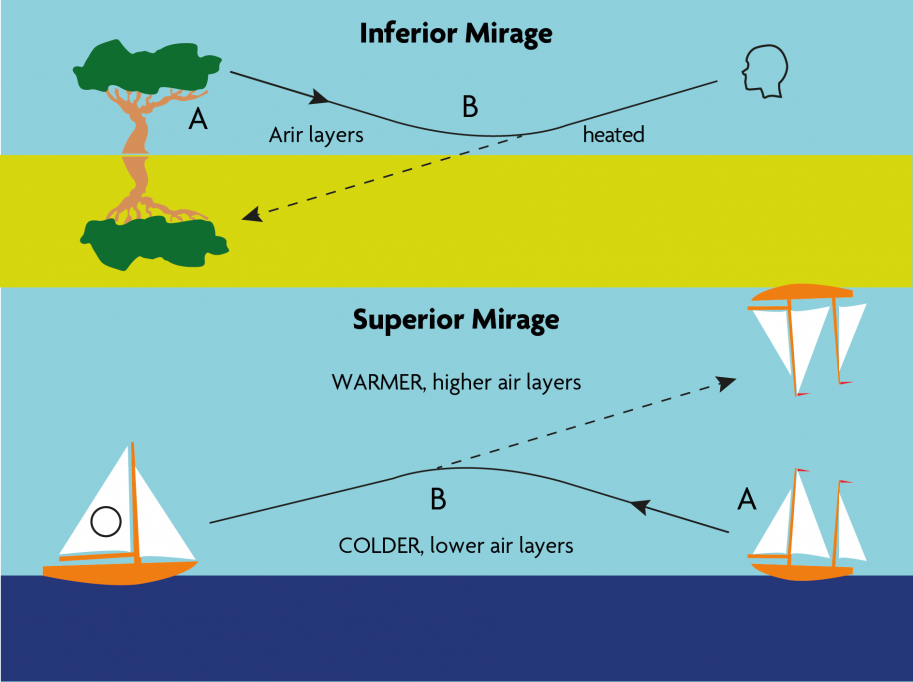
INMACULADA PASCUAL VILLALOBOS answers:
We call seeing objects where they are not a mirage. It is an optical illusion that can be seen on very hot days and in places like deserts.
This phenomenon is caused by the different temperature at which the different layers of the atmosphere are found. This temperature difference generates variations in the refractive index of the various atmospheric layers, so that light does not propagate in a straight line, but is gradually curved. The mirage is finally produced because the eye places the image in a straight line from the rays that affect it.
This phenomenon is most marked in places where the soil, strongly heated by the solar rays, raises the temperature of the lower layers of the atmosphere, decreasing its density and increasing the speed of the wave fronts that travel close to the ground. Thus, the parts of the wavefront near the ground move with greater velocity and advance to higher parts, causing the rays that reach the observer to bend. As a result, the observer sees the object and its image reflected on the ground. This leads him to think, if he finds himself in the desert, that there is a mass of water that gives rise to this reflection, or a wet area on the pavement if he is driving along the road; both disappear when reached.

The mirage of ghost ships sailing across the clouds on the northern coasts is also common. This is the Fata Morgana effect. In this case the sea is very cold, while the higher zones have a higher temperature and the curvature of the light rays is produced in the opposite direction, giving rise to the illusion in the areas of lower density, which are now located in the upper layers of the atmosphere.
Inmaculada Pascual Villalobos is a professor at the Department of Optics, Pharmacology, and Anatomy of the University of Alacant.





